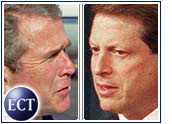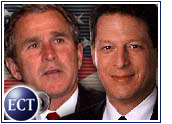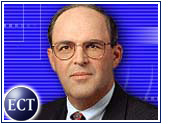The U.S. Department of Commerce will be doling out $12.5 million (US$) in grants to local governments and non-profit organizations as a small step in closing the so-called digital divide between Americans who access the Internet for business, education and home use, and those who cannot afford to.
The grants are available under the department’s continuing Telecommunications and Information Infrastructure Assistance Program, which it says is being renamed the Technology Opportunities Program “to better reflect opportunities the many new technologies provide for economic advancement.”
The Technology Opportunities Program is a competitive, merit-based program that provides start-up money for innovative, practical projects that use advanced telecommunications and information technology. The program has provided more than $135 million in matching grants since its inception in 1994.
Clinton Administration Pet Project
The money is available for programs that more broadly give underprivileged people “tools critical to economic success and advancement,” but the Clinton administration has made it clear over the past eight months that it believes America’s future is on the Internet.
Last summer, the Commerce Department released a study that showed a dramatic and growing gap between higher income suburban families and lower income urban and rural families in their use of the Internet for information, shopping and operating businesses. The administration pledged at that time to increase its focus on that incongruity and develop new programs to address it.
According to a December 1999 Harris Poll, the gap may already be shrinking somewhat. The number of U.S. adults who use the Internet is up to 56 percent from just nine percent five years ago, Harris says. “Initially those online were mostly young, very well educated and male. Now, as the Internet population continues to grow, it looks more and more like the total adult population, with all segments of society represented,” the research firm said in that study.
Low-income homes and minorities are still lagging behind, however. Harris said that seven percent of the online population was African-American as of the December study release, compared to 12 percent of all adults. Fourteen percent of online users have household incomes of less than $25,000, compared with 25 percent of all adults, the company added.
As with most Clinton administration projects these days, Vice President and presidential candidate Al Gore is getting credit for spearheading the digital divide effort. However, since Gore is busy traveling to primary voting states, Commerce Secretary William Daley will travel around the country to promote the new grant money.
Road Trip for Daley
Next month, Daley plans to start a 12-city tour to raise public awareness of the need to improve access to new technologies for disadvantaged citizens. He will also use the stops to explain the administration’s grant program and other initiatives.
“New technologies are now the major driving force of our country’s economic growth,” Daley said. “Access and training, therefore, become even more essential so that all Americans have the ability to participate and benefit from the new economy.”
The Commerce Department says that its focus this year for the grant program is specifically on projects developed by small, locally-based organizations that both serve and represent technologically under-served communities. The full grant program is described in the Federal Register and on the Department of Commerce’s National Telecommunications Infrastructure Administration Web site.
The deadline for organizations to apply for the matching funds is March 16th.






































Social Media
See all Social Media